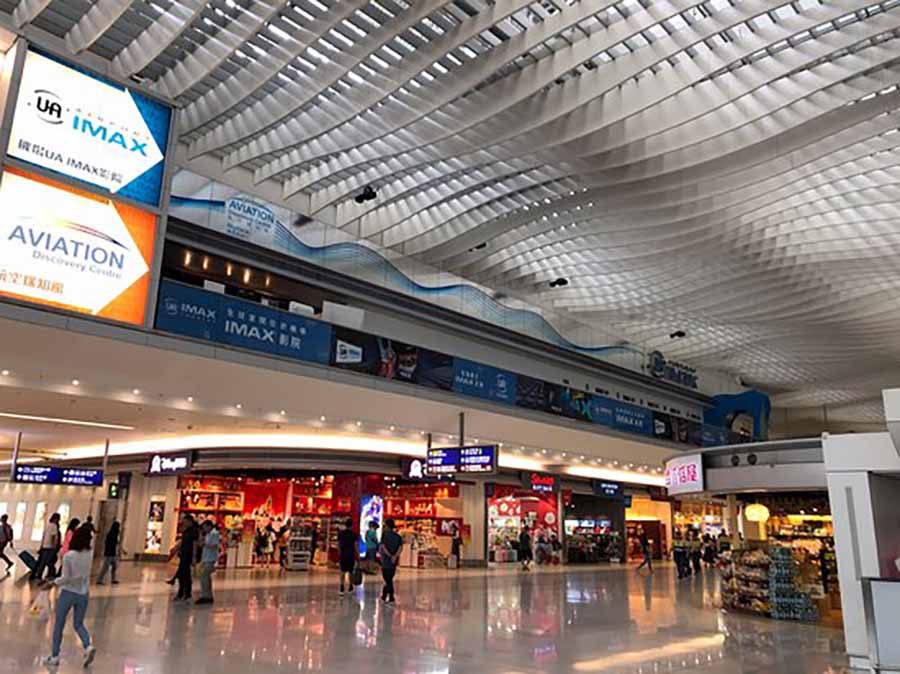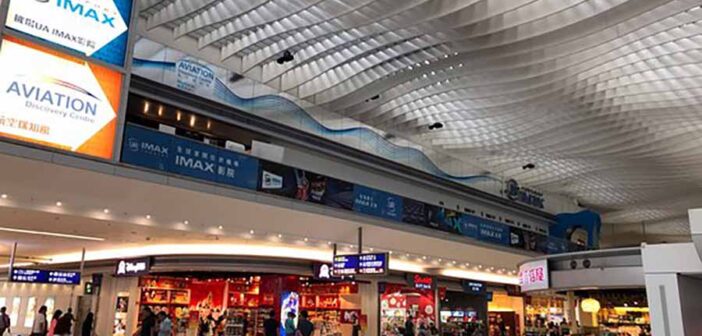
Hong Kong International Airport, located on Chek Lap Kok Island, 34 kilometres from Hong Kong’s city centre, ranks among the world’s busiest, handling over 70 million passengers annually. As a hub for Cathay Pacific, Hong Kong Airlines, and HK Express, it connects to nearly 200 destinations across Europe, Asia, North America, and Australia, while serving as the world’s top cargo gateway. Operated by the Airport Authority Hong Kong, its modern design, expansive amenities, and efficient operations ensure a pleasant experience for travellers exploring the region or transiting globally.
The passenger experience at Hong Kong International Airport is streamlined and welcoming. The airport’s two terminals—Terminal 1, one of the largest passenger terminals globally with 89 gates, and Terminal 2, primarily a check-in and shopping hub—cater to both domestic and international flights. Arrivals typically involve a short walk via jet bridges or a quick bus transfer, with clear signage in English and Chinese guiding passengers to baggage claim or transfer desks. Check-in, with over 100 smart kiosks and counters in Terminal 1, is efficient, though some travellers note kiosks can take 10–15 seconds to load, and queues may form during peak hours.
Security screening, equipped with advanced technology, requires liquids in a 1-litre bag and electronics in separate trays, with wait times averaging 5–15 minutes but occasionally reaching 30 minutes during busy periods. E-Security Gates and e-Boarding Gates, using facial recognition for passengers aged 11 and above with electronic documents, speed up processes, while assisted channels support those needing help. A free mobility assistance service, bookable 48 hours in advance, includes wheelchairs and priority lanes, earning high praise for accessibility.
Accessing the airport is highly convenient. The Airport Express train, part of the MTR network, whisks passengers to Central Station in 24 minutes for HK$115 (€14), running every 10 minutes from 5:50 am. to 1:15 am. Citybus and Long Win Bus operate over 40 routes, including the A11 to City Hall for HK$40 (€5), taking 45–60 minutes.
Taxis, available at arrivals, cost HK$300–€350 to Central, while Uber offers similar fares. Car hire desks from Avis, Europcar, and Hertz are in Terminal 1, and 3,000 parking spaces, including electric vehicle charging, start at HK$24 per hour. SkyPier’s ferry service connects to Macau and Shenzhen, bypassing immigration for transit passengers. Traffic on Route 8 during rush hours can slow journeys, so checking www.
hongkongairport.com for updates is wise. The airport’s layout is intuitive, with Terminal 1’s Y-shaped design housing check-in and security at the base, departures on Level 7, and arrivals on Level 5. Terminal 2, connected by a free Automated People Mover, focuses on check-in and SkyPlaza, a shopping and entertainment hub. The Midfield Concourse and North Satellite Concourse, accessible by shuttle, serve additional gates. Three runways, including a new third runway opened in 2022, support efficient operations. Digital flight displays provide real-time updates, and moving walkways ease the 10–15-minute walk between farthest gates. Seating can be limited during peak summer and holiday seasons, but ongoing expansions are addressing this.
Delays are minimal, with strong on-time performance, though average delays of 15–30 minutes can occur due to air traffic control issues, weather like typhoons, or gate allocation challenges, as noted in some online reviews. Travellers should arrive two hours early for domestic flights and three for international to account for potential queues. Dining and retail options are extensive. Terminal 1’s East and West Halls feature Michelin-starred Duddell’s for Cantonese cuisine, Bari-Uma for ramen, and fast-food outlets like McDonald’s, open from 6 am. to midnight. Terminal 2’s SkyPlaza offers Crystal Jade for dim sum and grab-and-go options. Heinemann Duty Free, Relay, and luxury boutiques sell electronics, fashion, and souvenirs, though prices may be high. Plaza Premium and Centurion Lounges, starting at HK$280 (€35), provide showers, snacks, and Wi-Fi.
Facilities enhance comfort. Free unlimited Wi-Fi via “HKAirport Free WiFi” requires no registration, and charging points are plentiful. Baggage storage on Level 3 of Terminal 2 costs HK$12 per hour, and a 24/7 medical centre, prayer rooms near Gates 42 and 13–21, and a children’s play area cater to diverse needs. The Aviation Discovery Centre and UA IMAX Theatre in Terminal 2 offer entertainment, while the SkyDeck provides apron views. Accessibility features include ramps, lifts, and tactile paths, with shuttle buses equipped for wheelchairs. The Regal Airport Hotel, connected by an air-conditioned bridge, offers day rooms.
Connections are seamless, with a 45-minute minimum connection time for international flights, among Asia’s shortest. The single-terminal setup and airside transit desks for airlines like Cathay Pacific simplify transfers, but self-transfers on separate tickets require clearing immigration and security, needing a 2–3-hour buffer. Popular routes to Tokyo, Singapore, and Sydney facilitate connections, though delays from weather, understaffing, or gate congestion can affect tight schedules. Checking flight status via www.hongkongairport.com or Flightradar24 is advised.




